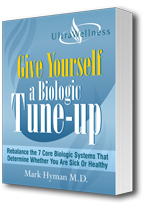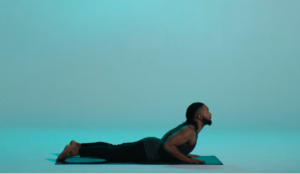Treating Diseases with Aerobic Exercise
Effect of Exercise on Depression
Exercise can raise mood-enhancing neurotransmitters in the brain resulting in an improved mood and outlook. Exercise may also cause depression by triggering the release of endorphins, which are commonly associated with a “feel good” effect in addition to inducing relaxation and ensuring sound sleep.
Exercise also helps to reduce levels of cortisol, known as the stress hormone. Along with reducing stress, exercise can improve such symptoms as anxiety, irritability, fatigure, anger and hopelessness. It can get rid of built-up stress and frustration which can lead to depression.
Exercise can create a sense of well-being by increasing your sense of control over your condition, your self-esteem, and by providing a distraction from your depressed mental state.
Read more about Exercise on Depression
Effect of Exercise on Rheumatoid Arthritis
Exercise is an important element of any physical therapy plan. Physical therapists can teach the patient techniques that will help manage the pain, and restore mobility and muscle strength. The exercise plan is tailored to the patient’s ability and overall fitness level. It generally includes stretching and flexibility exercises, strength exercises, and aerobic exercise.
It is important to pick a type of exercise and durations that are compatible with your physical health. If you have a serious health condition, consult with your physician before starting an exercise program.
A health condition or injury may prevent you from engaging in certain types of exercise such as jogging or bike riding but walking. Gentler forms of movement such as stretching or yoga may still be safe and beneficial options.
Read more about Exercise and Rheumatoid Arthritis
Effect of Exercise on Insomnia
Exercise may counteract symptoms of insomnia because it improves the quality of sleep. It allows for a smoother and more regular transition between cycles and phases of sleep.
Research suggests that exercise may improve the sleep quality of adults. A study published in Journals of Gerontology shows that a moderate-intensity exercise program can improve sleep in older adults. For this study, researchers at Stanford University recruited sedentary adults, aged 55 or older, that were free of heart disease. The subjects had mild to moderate chronic sleep complaints. They were randomly assigned to a 12-month program of modrate-intensity endurance exercise or a health education program. The outcome was measured using polysomnographic sleep recordings, with additional measures of subjective sleep quality, physical activity, and physical fitness. Results show that the participants who were in the exercise program experienced greater improvements than the control group.
Read more about Insomnia and Exercise
Effect of Exercise on Infertility
Exercise is a necessity in increasing fertility with men and women. First, exercise helps to reduce insulin resistance by allowing the muscles to be more efficient in taking in glucose, helping to keep blood sugar levels stable. Exercise also lowers stress hormones which can get in the way of fertility. It improves blood flow to the pelvic area so that the uterus and ovaries have a strong oxygen supply, improves immune function by lowering inflammation (which can interfere with implantation of the fertilized egg), helps you have more energy and normalizes circadian rhythm so that you sleep more soundly. As fitness improves, so do energy levels and mood, contributing to a more fertile you.
Read more about Infertility and Exercise
Effect of Exercise on Generalized Anxiety Disorder
Increasing one’s level of exercise provides a wide variety of benefits. Besides enhancing strength and endurance and improving physical attractiveness, exercise is thought to enhance overall health as well as reduce symptoms in a number of specific ailments. However, while the many benefits of exercise appear self-evident, they can be quite difficult to prove in a scientific sense. The primary problem comes down to this: it is difficult, if not impossible, to design a double-blind study of exercise. Perhaps, however, proof in this way is not needed.
Regular physical activity may also help to reduce anxiety. Some good options include brisk walking, swimming, and strength training.
In addition to altering brain chemicals (which are often involved in Generalized Anxiety Disorder) exercise can change other physiological and psychological factors as well: exercise can help relieve stress, fight off free radicals, generally keep the body functioning well, and make you feel better about yourself. Plus, when approached moderately, there are few potential side effects, so try adding some regular physical activity into your routine – you may find that it helps you more than you had anticipated!
Read more about Generalized Anxiety Disorder and Exercise
Effect of Exercise on Low Back Pain and Sciatica
The human body was designed to use its physical capacities yet many of us have become sedentary. Not only does this have major effects on our weight and body mass index, but our muscles themselves, when unused, become weak and unable to function well. So, while decreasing strenuous exercise does have some benefits, such as reducing injuries, this decrease also presents major drawbacks.
Increasing strength and flexibility through exercise can be an extremely effective treatment for low back pain and sciatica.
The theory behind exercise for back pain and sciatica treatment is that the more flexible are the muscles in the back, the less pain the back will have. Also, when muscles that support back muscles are strong, the actual muscles in the back will not have to work as hard, and thus be less susceptible to pain. Though exercise hasn’t been extensively studied individually for it’s effectiveness as a treatment for low back pain and sciatica, it has been studied in conjunction with other therapies such as chiropractic care, massage, and prolotherapy.
Read more about Low Back Pain and Sciatica and Exercise.
—
Read More About Treating Diseases with Aerobic Exercise
Join Our Community
Archives
- January 2023
- December 2022
- September 2022
- August 2022
- June 2022
- May 2022
- April 2022
- March 2022
- February 2022
- January 2022
- December 2021
- November 2021
- October 2021
- September 2021
- August 2021
- July 2021
- June 2021
- May 2021
- March 2021
- September 2020
- August 2020
- July 2020
- June 2020
- May 2020
- April 2020
- March 2020
- February 2020
Subscribe

Sign up to receive FREE toolkit
From Dr. Hyman, #1 NY Times & Amazon Author
We never spam or sell your e-mail









Follow Our Every Move